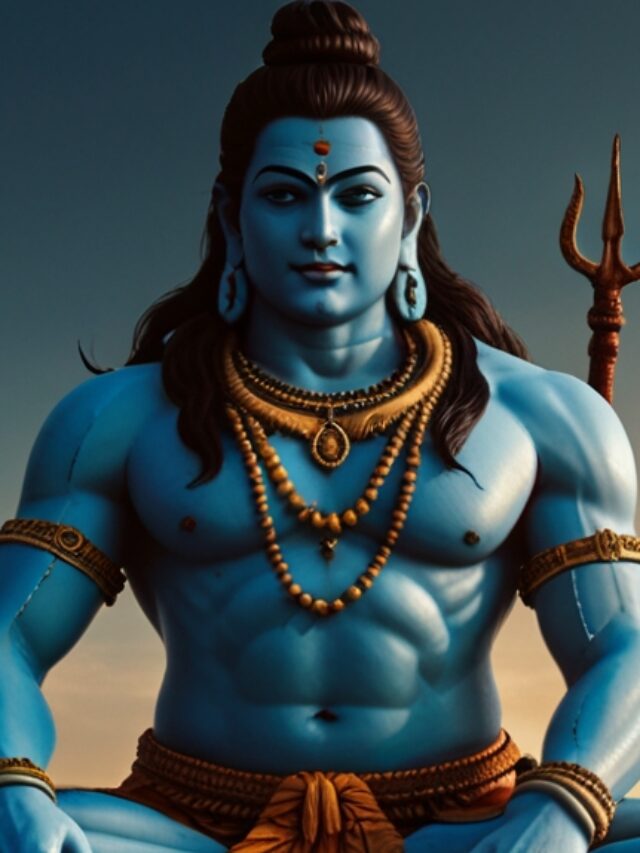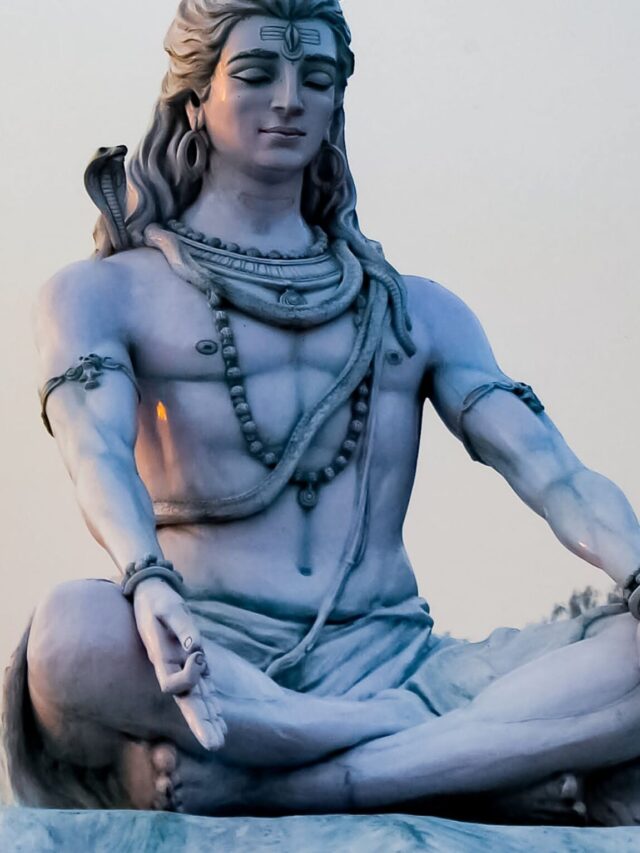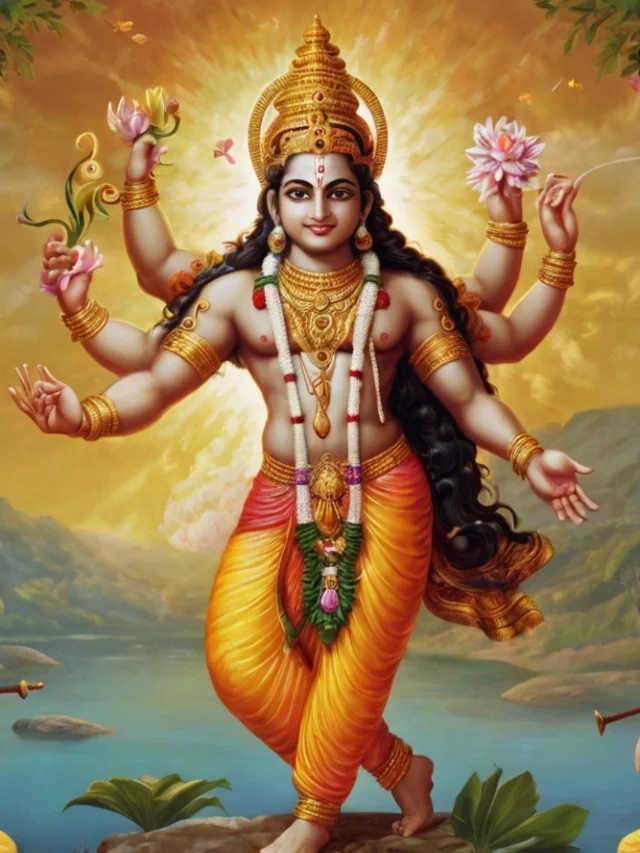Discover the events of Day 1 of the Kurukshetra War from the Mahabharata, where the Pandavas and Kauravas begin their epic battle. Learn about Arjuna’s initial struggle, Bhishma’s onslaught, and the strategic moves that set the stage for this legendary conflict.
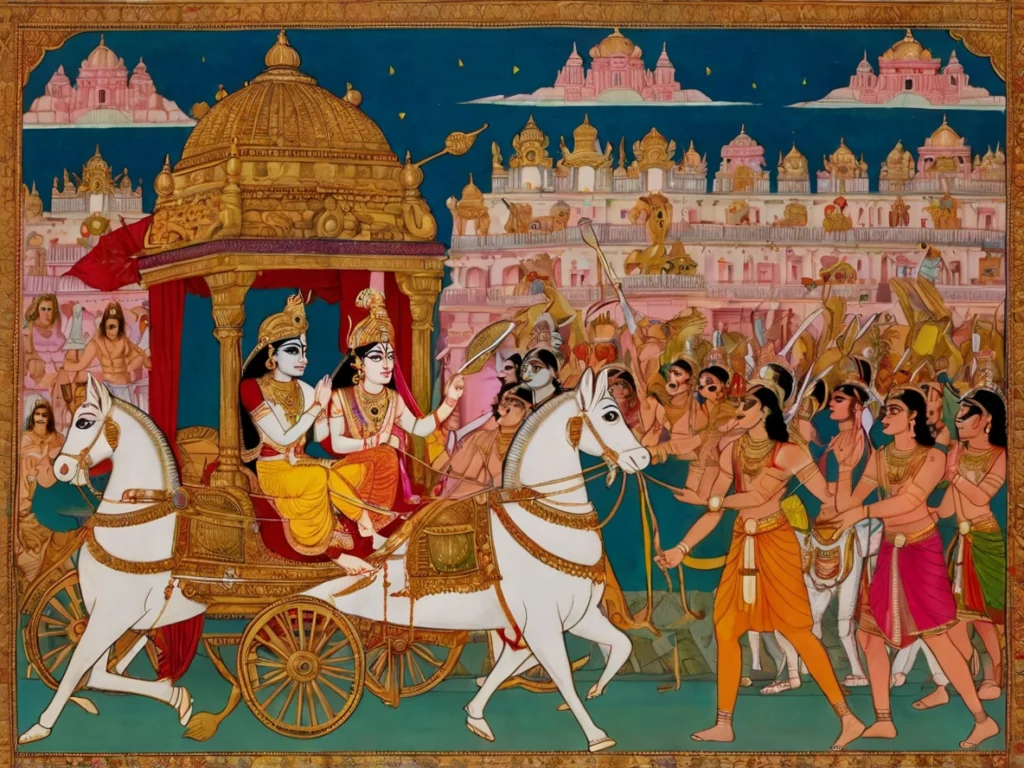
The Conversation Between Prince Arjuna and Lord Krishna on the Battlefield of Kurukshetra
The conversation between Prince Arjuna and Lord Krishna is one of the most profound dialogues in spiritual literature, taking place just before the start of the great war of Kurukshetra in the Indian epic, the Mahabharata. As Arjuna, a key warrior of the Pandava army, stands on the battlefield, he faces a moment of intense inner conflict and doubt. The dialogue that follows, captured in the Bhagavad Gita, addresses fundamental questions about duty, righteousness, life, and the nature of existence.
Arjuna’s Dilemma
As the two armies stand ready for battle, Arjuna asks Krishna, who serves as his charioteer, to take their chariot to the middle of the battlefield so he can see who he must fight. As Arjuna surveys the battlefield, he sees his own relatives, beloved friends, revered teachers, and mentors on the opposing side. The sight overwhelms him with sorrow, compassion, and a deep moral crisis.
Arjuna lowers his bow, the Gandiva, and expresses his distress to Krishna:
- Arjuna’s Crisis: Arjuna confesses that his will to fight has evaporated, and his body trembles with fear. He is torn between his duty as a warrior and his love for his kin. He tells Krishna that he sees no good in slaying his own family and that the thought of killing those he loves brings him unbearable grief. He fears the destruction of family traditions, the rise of chaos, and the loss of righteousness (Dharma).
Arjuna asks Krishna for guidance, saying, “I do not see any solution to this grief that is drying up my senses. I am your disciple, please instruct me.” He surrenders to Krishna, admitting his confusion and seeking the wisdom of his divine charioteer.
Krishna’s Response and Teachings
Krishna begins his response with a gentle reprimand. He asks Arjuna why he is succumbing to weakness and despair at this critical moment, questioning the source of his confusion when he is facing his duty as a warrior. Then, Krishna begins to impart deeper spiritual wisdom to guide Arjuna out of his turmoil.
The Nature of the Soul: Krishna explains the eternal nature of the soul (Atman). He tells Arjuna that the physical body is temporary, but the soul is immortal and cannot be destroyed. Death is merely a transition from one form to another, and the soul continues its journey. Krishna says, “Just as a person casts off worn-out garments and puts on new ones, so does the soul cast off its worn-out body and enters a new one.”
The Concept of Duty (Dharma): Krishna emphasizes that as a Kshatriya (warrior), it is Arjuna’s duty (Dharma) to fight for righteousness and justice, regardless of personal relationships. By refusing to fight, Arjuna would be failing in his duty and bring dishonor upon himself. Krishna urges him to rise above personal emotions and focus on his righteous duty as a warrior.
Selfless Action (Karma Yoga): Krishna introduces the concept of Karma Yoga, the yoga of selfless action. He advises Arjuna to perform his duties without attachment to the fruits of his actions. The focus should be on the action itself, not the results. Krishna says, “You have the right to perform your prescribed duties, but you are not entitled to the fruits of your actions.” By acting without attachment, one can achieve inner peace and spiritual growth.
Equanimity and the Balanced Mind (Sthitaprajna): Krishna teaches Arjuna about maintaining a balanced mind, or Sthitaprajna. A person with a steady mind remains unaffected by pleasure or pain, success or failure. Such equanimity is crucial for a warrior and for anyone seeking liberation. Krishna encourages Arjuna to transcend his dualities of attachment and aversion and to maintain an attitude of neutrality toward the experiences of life.
Paths to Liberation (Moksha): Krishna speaks about different paths to attain spiritual liberation (Moksha): Jnana Yoga (the path of knowledge), Karma Yoga (the path of action), and Bhakti Yoga (the path of devotion). He explains that all these paths lead to the same ultimate truth and that one should choose a path that aligns with their disposition and nature.
Revelation of the Divine Form (Vishwarupa Darshan): To reinforce his teachings and demonstrate his divine nature, Krishna reveals his cosmic form (Vishwarupa) to Arjuna. In this magnificent vision, Arjuna sees Krishna as the infinite, omnipresent being who encompasses all of creation, life, and death. This vision helps Arjuna understand the nature of existence, the unity of all life, and the ultimate truth that Krishna embodies.
Devotion and Surrender (Bhakti Yoga): Krishna teaches the importance of Bhakti or devotion to God. He assures Arjuna that surrendering to God, with complete faith and devotion, will lead to liberation from the cycle of birth and death. Krishna declares, “Abandon all varieties of religion and simply surrender unto Me. I shall deliver you from all sinful reactions; do not fear.”
The Resolution
Krishna’s teachings provide Arjuna with the clarity and wisdom he needs to overcome his doubts. Arjuna realizes that his duty as a warrior is not just to fight but to uphold righteousness and justice. He understands that his hesitation and grief are born out of attachment and ignorance. With Krishna’s guidance, Arjuna resolves to fight, now with a clear mind and a steady heart, ready to fulfill his duty.
Arjuna declares, “My delusion is gone, and I have regained my memory. I stand firm, free from doubt, and I shall act according to Your word.”
Significance of the Conversation
The conversation between Arjuna and Krishna, captured in the Bhagavad Gita, addresses the human condition and provides profound guidance on how to live with purpose, integrity, and spiritual awareness. It teaches that one should act in accordance with their duty without attachment to the results, embrace equanimity in the face of life’s challenges, and ultimately seek refuge in the divine.
The Enduring Legacy
This dialogue has inspired countless generations, serving as a philosophical and spiritual guide to living a meaningful life. It remains relevant to people of all walks of life, offering timeless wisdom on how to navigate the complexities of human existence.
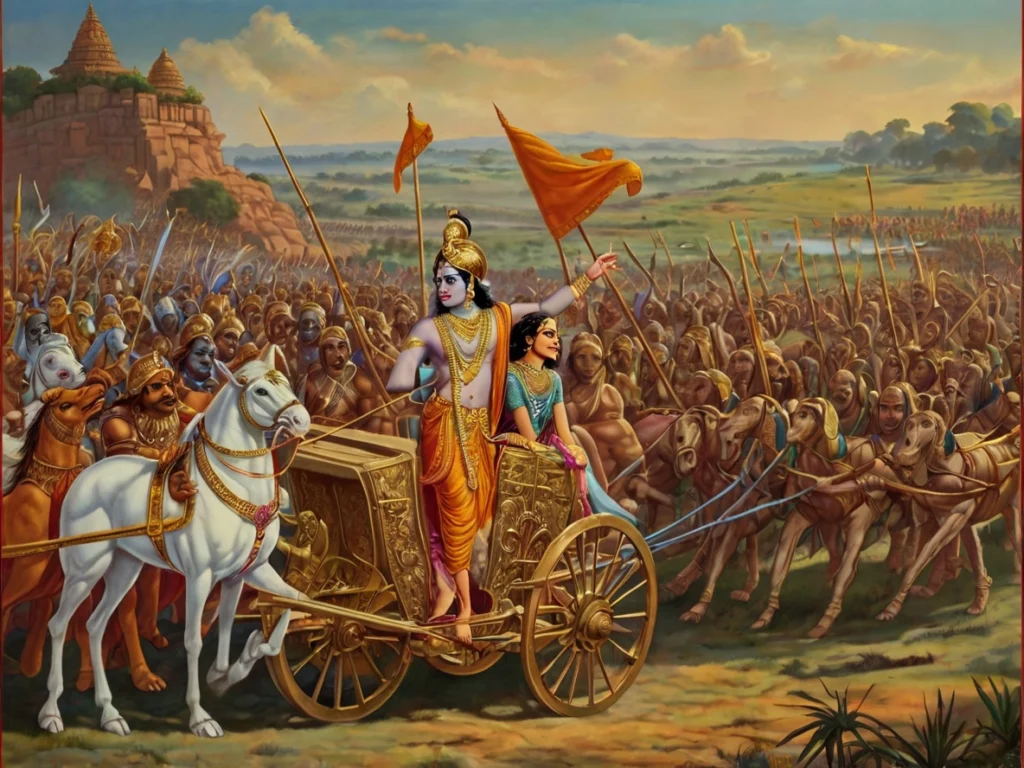
Day 1 of the Kurukshetra War – Mahabharata
The first day of the Kurukshetra War marked the beginning of one of the most epic battles in Indian mythology, fought between the Pandavas and the Kauravas on the plains of Kurukshetra. As the conch shells were blown on both sides, it set the stage for a war that would last for 18 days.
The Morning Preparations
Both armies were vast, comprising of millions of warriors, chariots, horses, and elephants. On the Kaurava side, Bhishma Pitamah, the grandsire of both the Kauravas and Pandavas, took the role of the commander-in-chief. The Kauravas’ formation on Day 1 was arranged in a powerful “Vyuh” (battle formation) led by Bhishma himself.
On the Pandava side, Yudhishthira, the eldest of the Pandavas, appointed Dhrishtadyumna, the son of Drupada, as their commander-in-chief. The Pandavas, while fewer in number compared to the Kauravas, relied on their superior strategy, courage, and divine support. The Pandavas arranged their army in a “Vajra Vyuh” (diamond formation).
The Battle Begins
As the sun rose, the battle began with a fierce exchange of arrows between Bhishma and Arjuna. Bhishma, being an invincible warrior and an unparalleled archer, wreaked havoc on the Pandava army. Arjuna, although restrained initially due to his respect for his grandsire, soon realized the intensity of Bhishma’s assault and began countering his moves with determination.
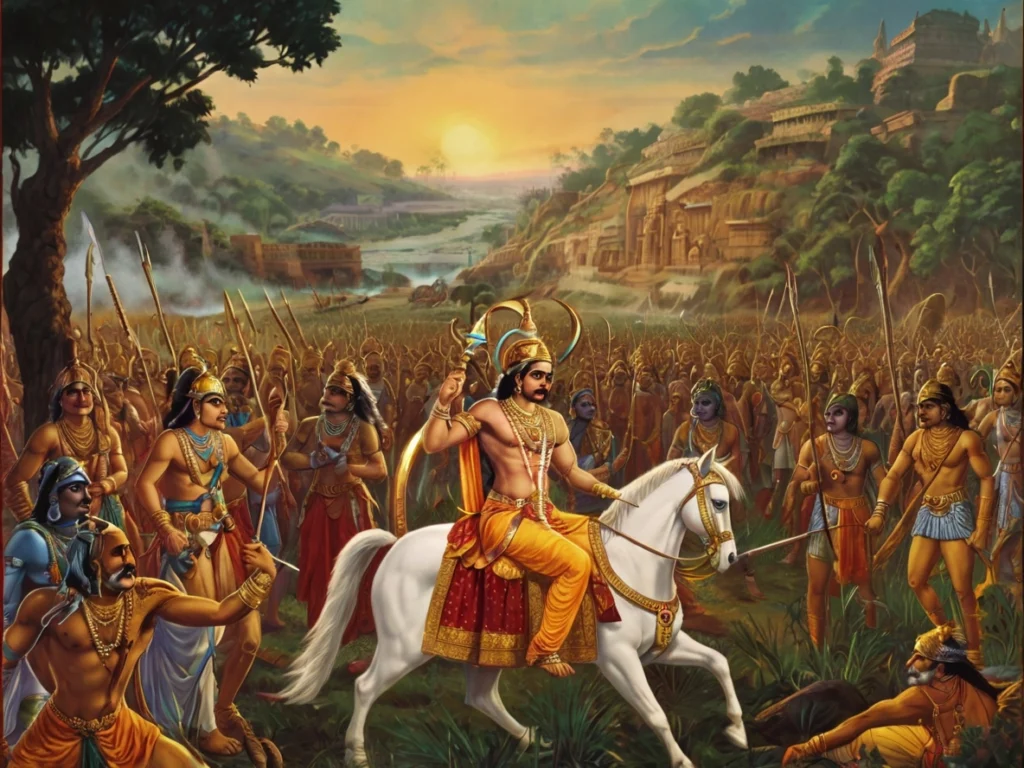
The warriors from both sides engaged in numerous duels:
- Bhima faced off against Duryodhana, the leader of the Kauravas, with an intent to fulfill his vow to kill him. However, Bhima focused more on causing damage to the Kaurava army rather than engaging Duryodhana directly.
- Drona, the royal teacher of both the Kauravas and Pandavas, fought ferociously, causing significant losses to the Pandavas.
- Abhimanyu, the young and valiant son of Arjuna, showcased his skills by holding his ground against veteran Kaurava warriors, earning accolades from both sides for his bravery.
- Shalya, the king of Madra, fought with great vigor, and Shakuni, the cunning uncle of the Kauravas, used his tactical skills to bolster the Kaurava army’s morale.
Major Events
- Bhishma’s Onslaught: Bhishma’s attack was relentless, with his arrows causing massive damage to the Pandava forces. No one seemed capable of standing against him, and many Pandava warriors began to lose hope.
- Arjuna’s Determination: Krishna, who was Arjuna’s charioteer, reminded him of his duty as a Kshatriya (warrior) and urged him to focus on the battle rather than personal emotions. With Krishna’s guidance, Arjuna fought back with renewed vigor.
The Evening Phase
By evening, the battlefield was drenched in blood, and countless soldiers, elephants, and horses lay dead. The first day ended with the Kaurava army having a slight upper hand, primarily due to Bhishma’s supremacy in battle. The Pandavas, however, were far from being defeated. They retreated to their camps, knowing they had to devise new strategies to counter Bhishma’s prowess.
Reflections
That night, both camps pondered over the day’s events. Duryodhana and his allies were pleased with the day’s outcome, especially with Bhishma’s performance. Meanwhile, the Pandavas, led by Yudhishthira, strategized on how to neutralize Bhishma’s impact on the battlefield.
The first day of the war showed the Pandavas the immense challenge they were facing. However, their resolve to fight for righteousness (Dharma) and justice remained unshaken, setting the stage for the battles that would follow in the days to come.

